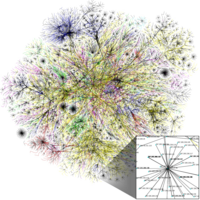
Photo from wikipedia
Transfer learning has been demonstrated to be effective for many real-world applications as it exploits knowledge present in labeled training data from a source domain to enhance a model’s performance… Click to show full abstract
Transfer learning has been demonstrated to be effective for many real-world applications as it exploits knowledge present in labeled training data from a source domain to enhance a model’s performance in a target domain, which has little or no labeled target training data. Utilizing a labeled source, or auxiliary, domain for aiding a target task can greatly reduce the cost and effort of collecting sufficient training labels to create an effective model in the new target distribution. Currently, most transfer learning methods assume the source and target domains consist of the same feature spaces which greatly limits their applications. This is because it may be difficult to collect auxiliary labeled source domain data that shares the same feature space as the target domain. Recently, heterogeneous transfer learning methods have been developed to address such limitations. This, in effect, expands the application of transfer learning to many other real-world tasks such as cross-language text categorization, text-to-image classification, and many others. Heterogeneous transfer learning is characterized by the source and target domains having differing feature spaces, but may also be combined with other issues such as differing data distributions and label spaces. These can present significant challenges, as one must develop a method to bridge the feature spaces, data distributions, and other gaps which may be present in these cross-domain learning tasks. This paper contributes a comprehensive survey and analysis of current methods designed for performing heterogeneous transfer learning tasks to provide an updated, centralized outlook into current methodologies.
Journal Title: Journal of Big Data
Year Published: 2017
Link to full text (if available)
Share on Social Media: Sign Up to like & get
recommendations!